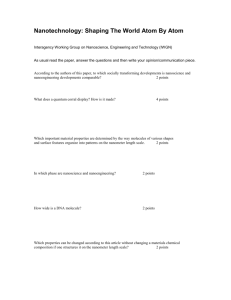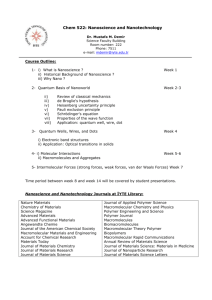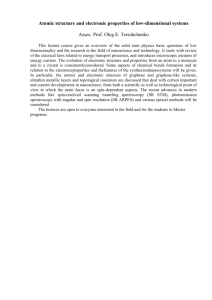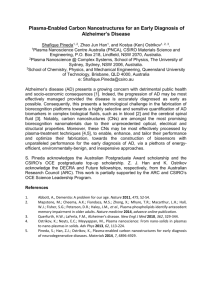Foreword
advertisement
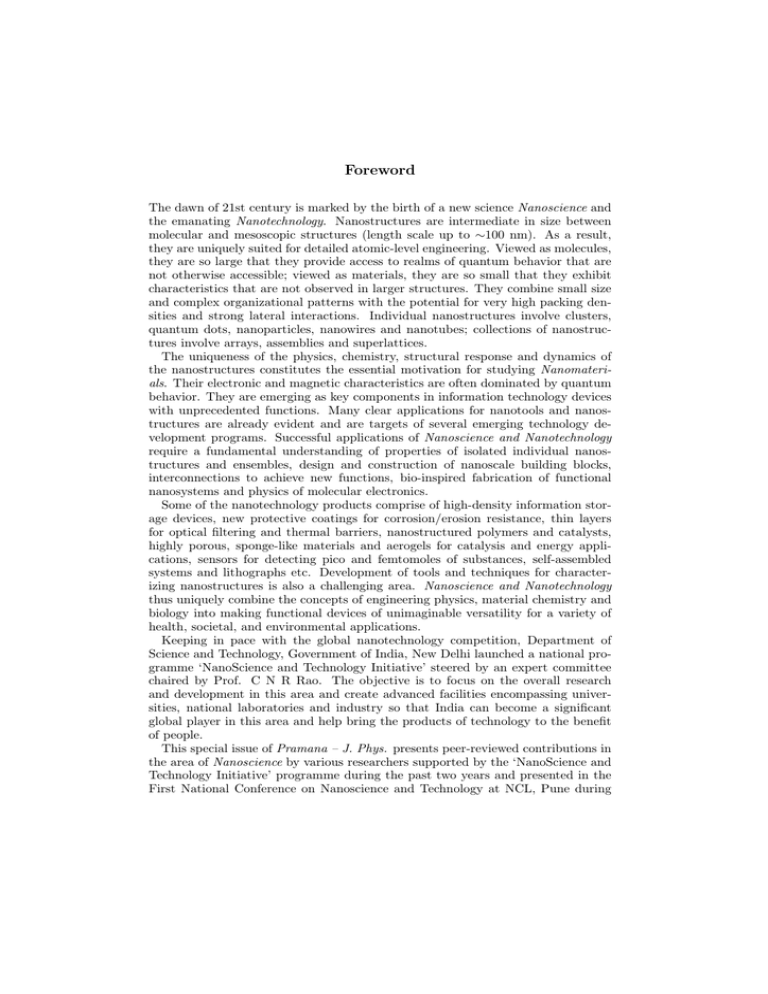
Foreword The dawn of 21st century is marked by the birth of a new science Nanoscience and the emanating Nanotechnology. Nanostructures are intermediate in size between molecular and mesoscopic structures (length scale up to ∼100 nm). As a result, they are uniquely suited for detailed atomic-level engineering. Viewed as molecules, they are so large that they provide access to realms of quantum behavior that are not otherwise accessible; viewed as materials, they are so small that they exhibit characteristics that are not observed in larger structures. They combine small size and complex organizational patterns with the potential for very high packing densities and strong lateral interactions. Individual nanostructures involve clusters, quantum dots, nanoparticles, nanowires and nanotubes; collections of nanostructures involve arrays, assemblies and superlattices. The uniqueness of the physics, chemistry, structural response and dynamics of the nanostructures constitutes the essential motivation for studying Nanomaterials. Their electronic and magnetic characteristics are often dominated by quantum behavior. They are emerging as key components in information technology devices with unprecedented functions. Many clear applications for nanotools and nanostructures are already evident and are targets of several emerging technology development programs. Successful applications of Nanoscience and Nanotechnology require a fundamental understanding of properties of isolated individual nanostructures and ensembles, design and construction of nanoscale building blocks, interconnections to achieve new functions, bio-inspired fabrication of functional nanosystems and physics of molecular electronics. Some of the nanotechnology products comprise of high-density information storage devices, new protective coatings for corrosion/erosion resistance, thin layers for optical filtering and thermal barriers, nanostructured polymers and catalysts, highly porous, sponge-like materials and aerogels for catalysis and energy applications, sensors for detecting pico and femtomoles of substances, self-assembled systems and lithographs etc. Development of tools and techniques for characterizing nanostructures is also a challenging area. Nanoscience and Nanotechnology thus uniquely combine the concepts of engineering physics, material chemistry and biology into making functional devices of unimaginable versatility for a variety of health, societal, and environmental applications. Keeping in pace with the global nanotechnology competition, Department of Science and Technology, Government of India, New Delhi launched a national programme ‘NanoScience and Technology Initiative’ steered by an expert committee chaired by Prof. C N R Rao. The objective is to focus on the overall research and development in this area and create advanced facilities encompassing universities, national laboratories and industry so that India can become a significant global player in this area and help bring the products of technology to the benefit of people. This special issue of Pramana – J. Phys. presents peer-reviewed contributions in the area of Nanoscience by various researchers supported by the ‘NanoScience and Technology Initiative’ programme during the past two years and presented in the First National Conference on Nanoscience and Technology at NCL, Pune during Foreword March 7 and 8, 2005. We are thankful to The Editors, Pramana for bringing out this special issue and to Prof. C N R Rao for steering the programme. A K Sood Indian Institute of Science Bangalore 560 012 K N Ganesh National Chemical Laboratory Pune 411 008 C S Sundar Indira Gandhi Centre for Atomic Research Kalpakkam 603 102 A K Raychaudhuri S.N. Bose National Centre for Basic Sciences Kolkata 700 098 (Guest Editors) 548
